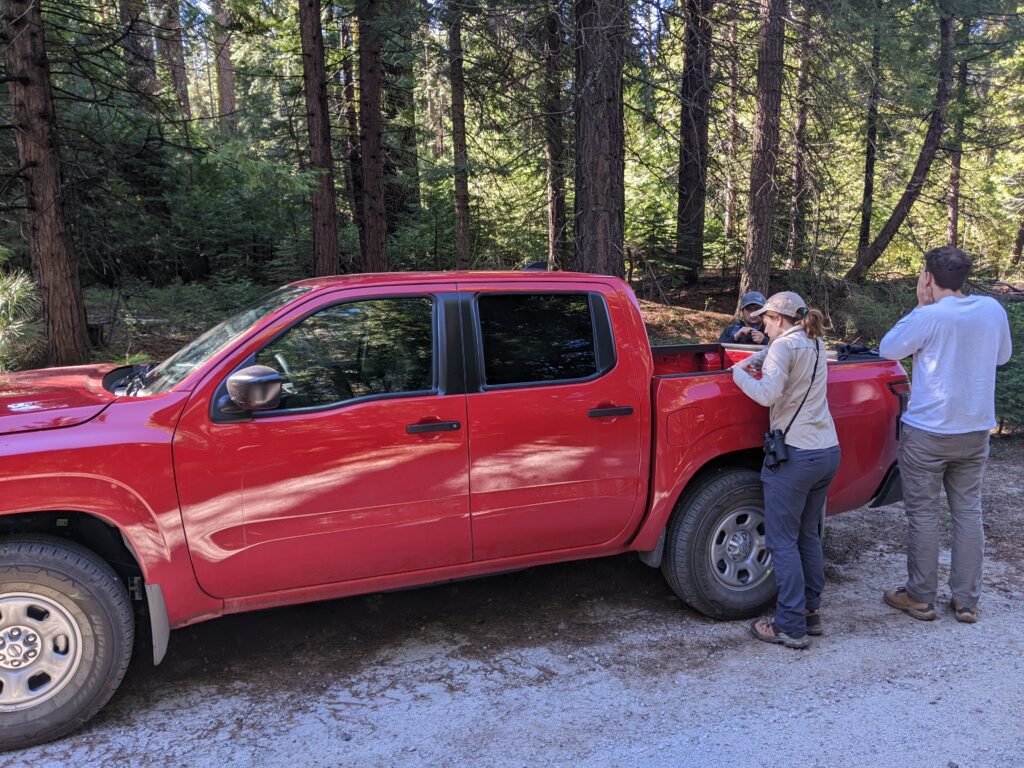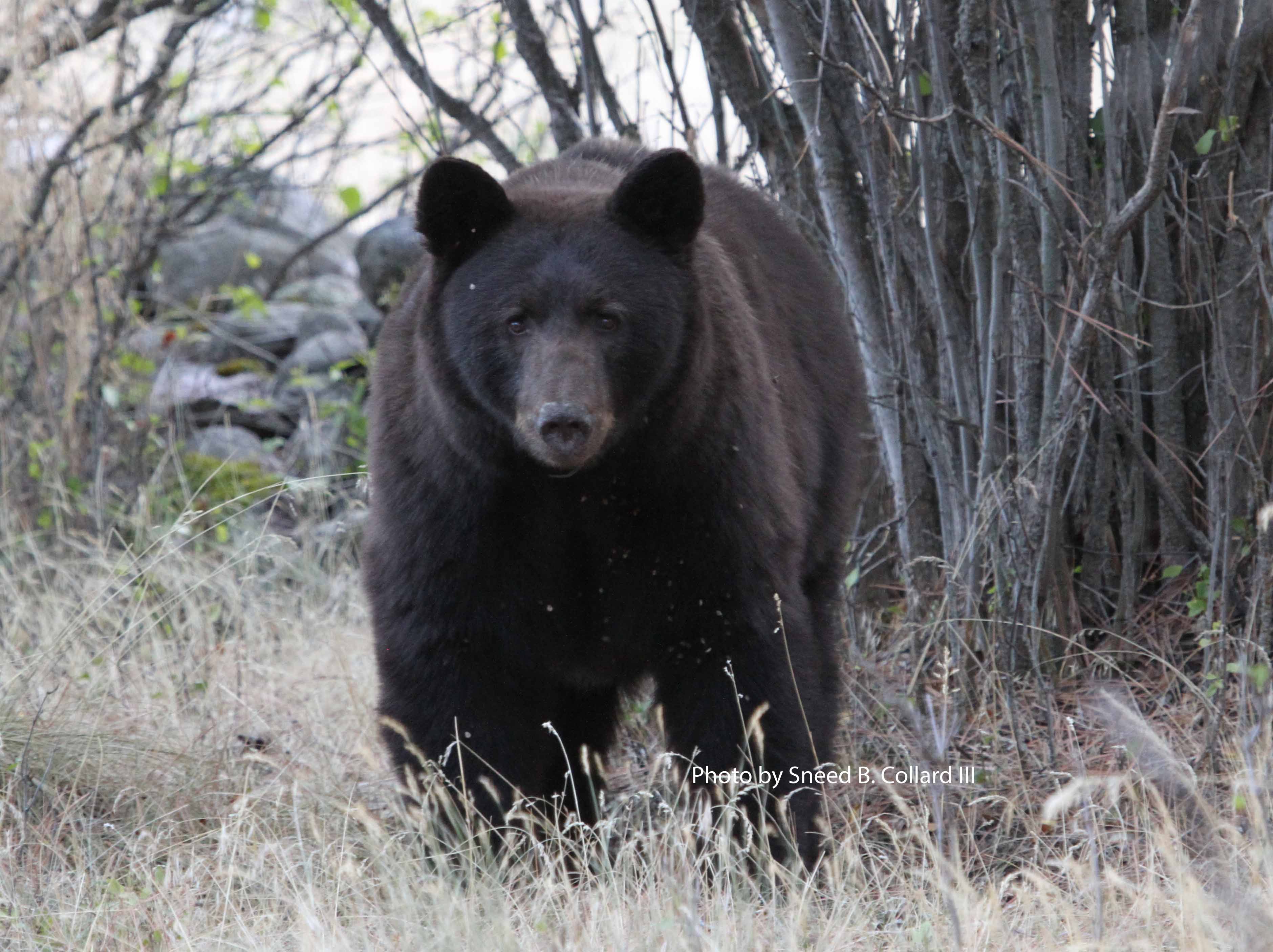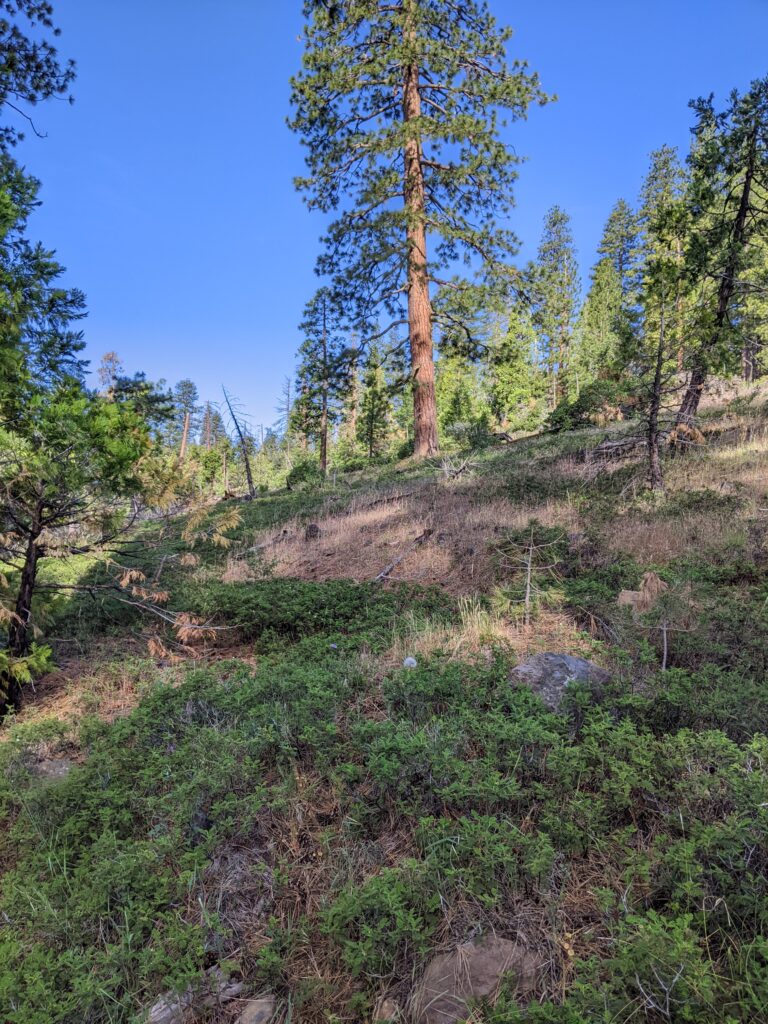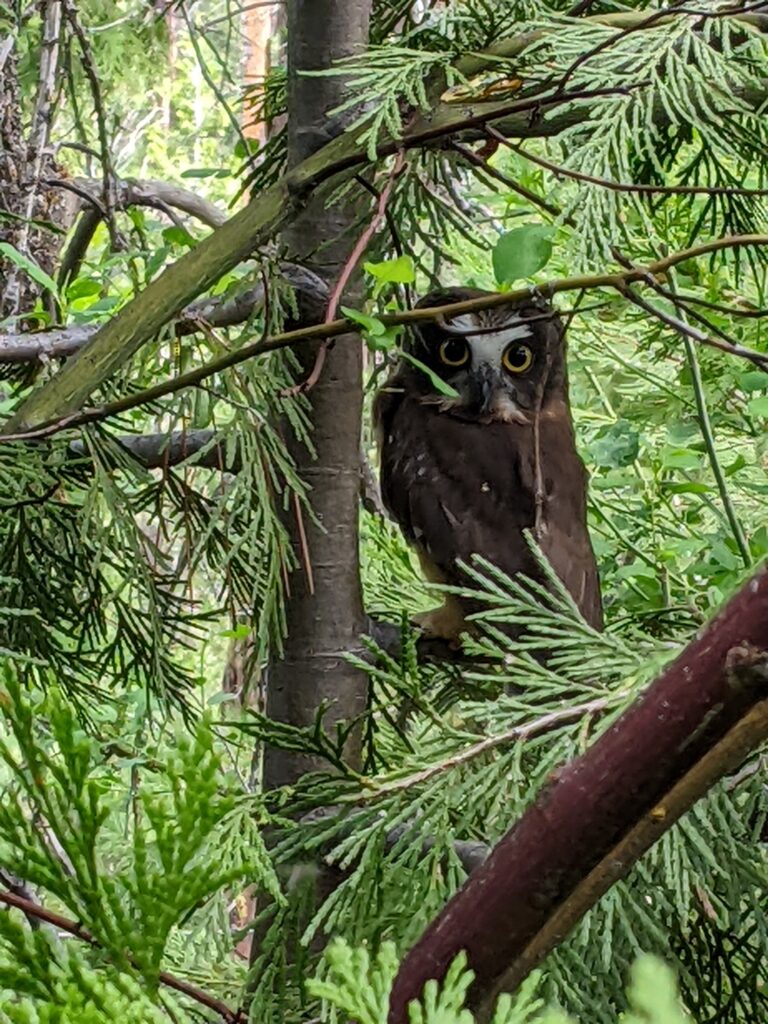We hope everyone had a nice 4th of July weekend. To help you get back into the usual routine, we’re delighted to present Braden’s second report from his job looking for Northern Goshawks in the California Sierras. So far, the goshawks are few, but the other animals abound! To see his first post, click here. Will there be more goshawks? What other surprises will greet his intrepid crew? Be sure to check in on upcoming posts to find out!
The Brushy Hollow PAC lay about forty-five minutes from Beardsley Lake, a man-made reservoir in the Stanislaus National Forest where we’d be spending the next two nights camping. After waking up at the crack of dawn and unsuccessfully trying to snag some good photos of the Black-throated Gray Warblers around camp, our crew began driving the cliffside road up to Brushy Hollow. As we neared the PAC, my peripheral vision caught a large brown animal absolutely booking it away from the car. Stanislaus National Forest was (unfortunately) filled to the brim with cattle–we either saw them or heard the bells hanging from their necks every time we went out. No cow had ever fled from the car this quickly, though, and as I snapped my head back to look I spotted paws, not hooves, trampling the brush before the mammal disappeared into the forest.
“Bear!” I shouted, but it was too late. The bear wanted nothing to do with us.

Again, the rest of the crew missed it, so a slightly disappointed car arrived at the parking lot for Brushy Hollow. The parking lot consisted of a small patch of grass off to the side of the dirt road, and we were greeted by an army of mosquitoes as we stepped outside of our brand new, cherry-red Nissan rental truck that the rental car company had decided to give us for the summer. We set off into the forest, which was only somewhat brushy and somewhat a hollow, despite the name of the PAC. Many of the usual birds greeted us, including calling Mountain Quail, Olive-sided Flycatcher and pairs of White-headed Woodpeckers flying between the pines. As far as ease of travel, the PAC turned out to be one of our best. Mountain Misery—a native, ground-hugging plant also called “bear clover” (foreshadowing warning)—covered much of the ground, meaning we barely had to lift our feet as we followed our transects. Sam and I met up and began walking up a hill towards Miles where we would enjoy lunch. As soon as we spotted Miles, he stood up and pointed frantically behind us.
“Bear!”
“Bear, bear, bear!!” We echoed as we whirled around to spot another bear sprinting away from us down a nearby road. Ivara followed suit, and we all yelled at the animal for a little while as was protocol before sitting down for lunch.
Adrenaline filling our veins, we sat down in the Mountain Misery, slapping mosquitoes and talking about what we’d just seen. Two bears in one day! And then, our eyes darted again to the same road, where two MORE brown bears ambled by, as if on their way to work!
We finished our lunch quickly, heading towards the other side of the PAC. I proceeded to get very lost, then eventually found, and we took one last break on a log before finishing up our transects for the day. As we scarfed down our last snacks, a crack echoed behind us. The sound of a branch breaking. We turned around, and the response was immediate.

“Bear! Bear!”
This time the brown bear just watched us for several minutes, wondering why four humans had suddenly started yelling at it during its afternoon walk. Eventually, though, this bear did turn tail, but not after my adrenaline hit new levels! Five bears was enough, and Ivara called it for the day.
Bear Note: All bears in California today are black bears. Black bears vary widely in color from black and cinnamon to the “brown black bears” that Braden observed. The bear on the California state flag, however, is a subspecies of the much larger grizzly bear. Apparently, about 10,000 grizzlies once roamed California. Large carnivores such as the grizzly, however, were not welcome by cattle ranchers and the influx of settlers following the gold rush, and the California grizzly was shot, trapped, and poisoned to extinction by the mid-1920s. Some efforts have been made to reintroduce grizzlies to the state, but so far, all proposals have been rejected. To read a nice article about the situation, click here.



